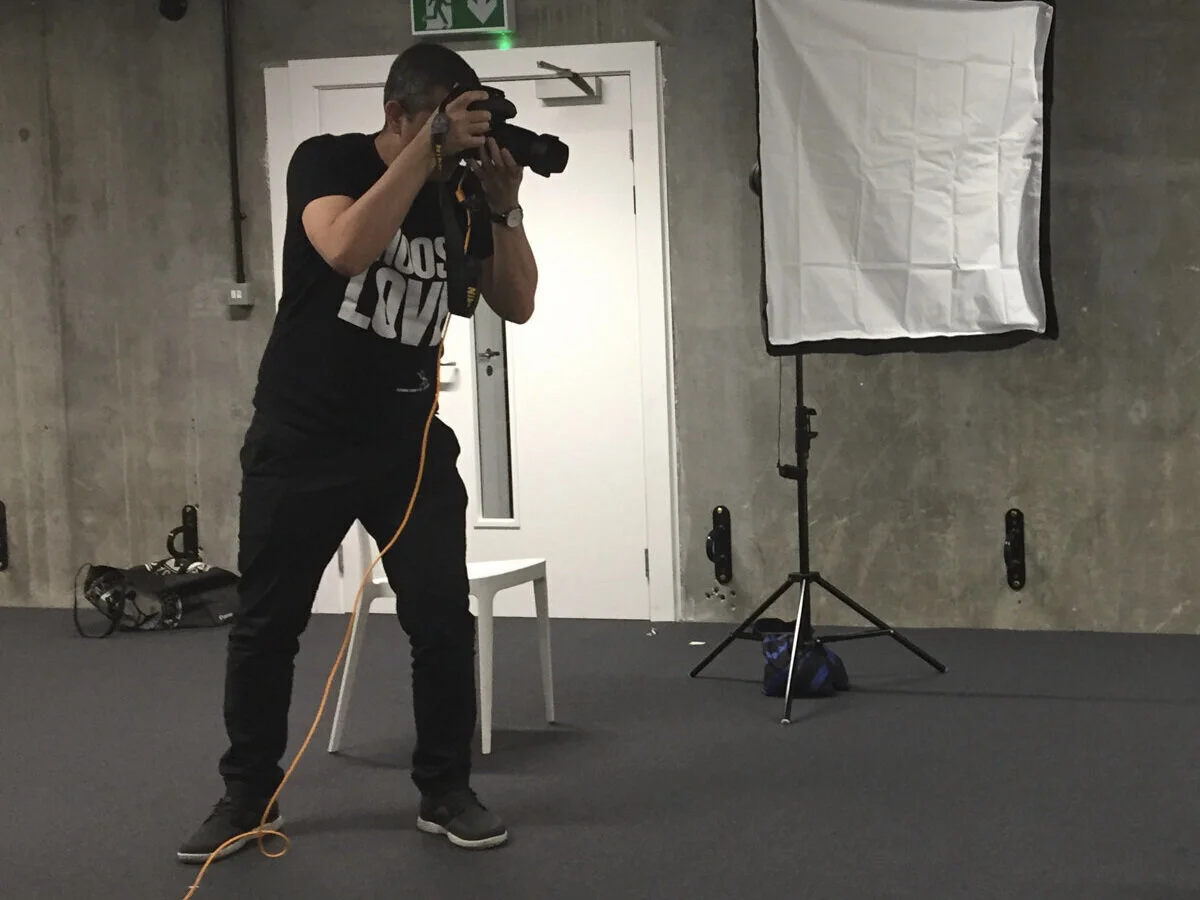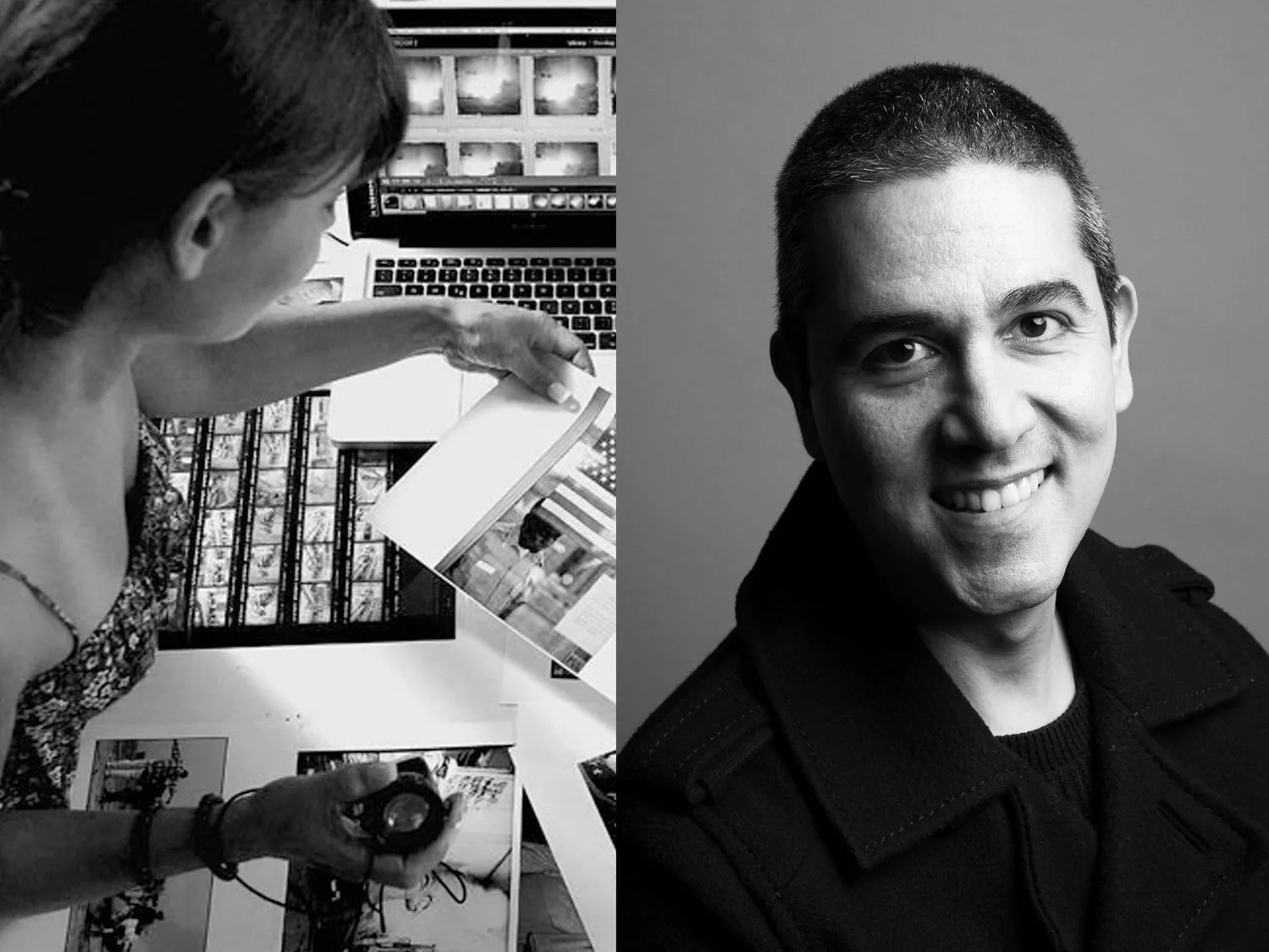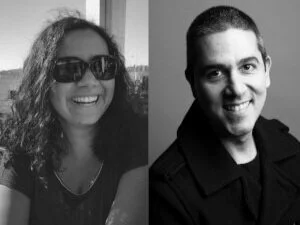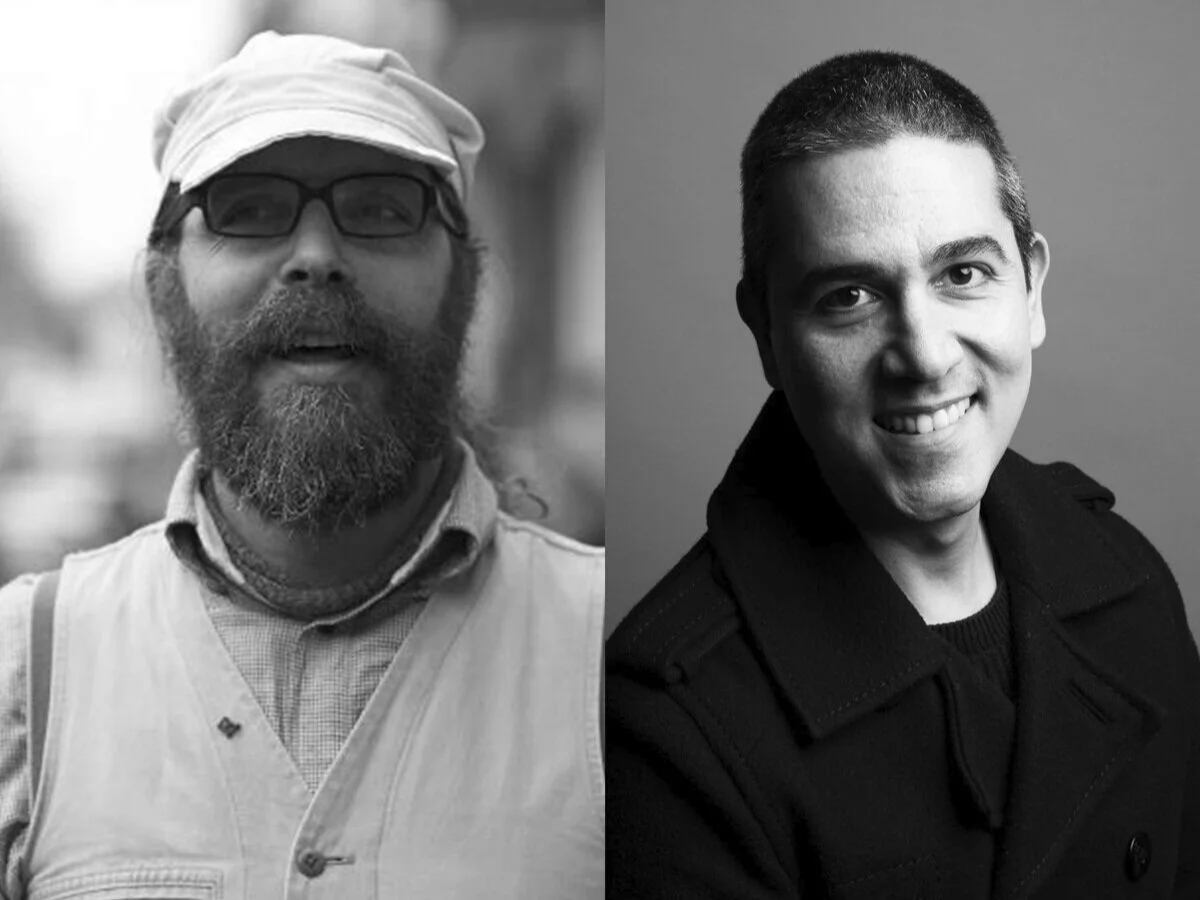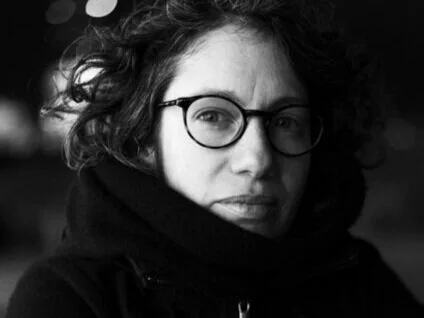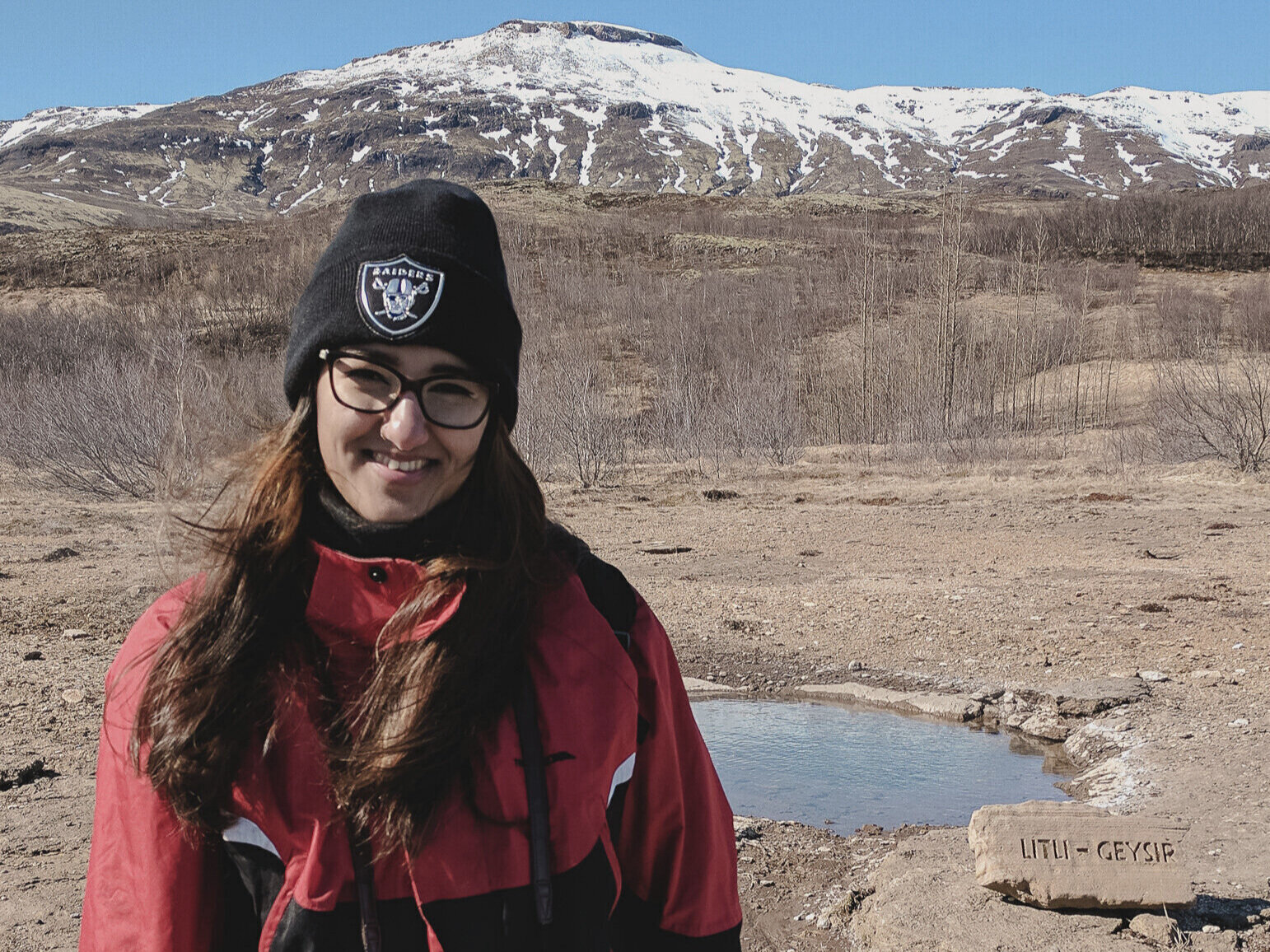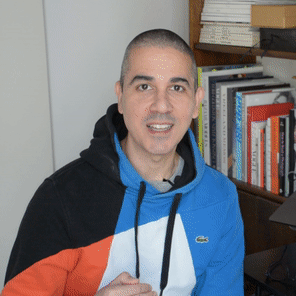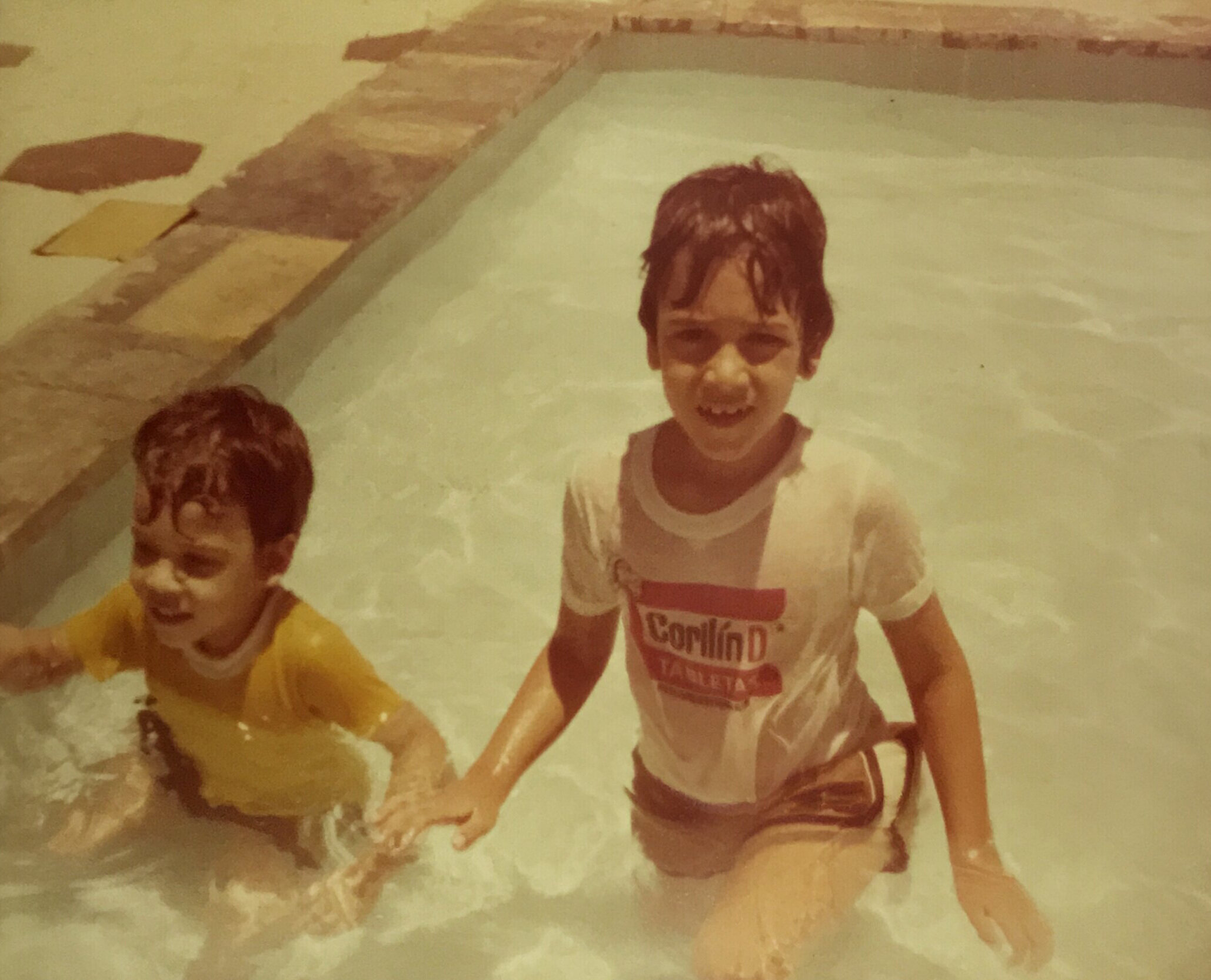At first sight, it's an old image of two kids in a pool. I say old because of the yellow tone and the film feeling, but it could easily be a photo taken yesterday and aged digitally in Photoshop. It speaks of childhood, of summer days, of friendship or family ties, it awakens joy.
On closer examination, you can see the way the boys are dressed and try to infer the year when the photo was taken by the clothes they are wearing. It is still difficult to say because the clothes could be second hand, they could be a returning trend or they could have even been selected on purpose to portray a period in history.
The first real clue relies on the t-shirt worn by the boy on the right. If you Google what it says, you will find out that it is an advertisement for medicine that dates back to the late '70s early '80s. It still doesn't tell us if the photo is from that time because it could be a t-shirt made to look vintage, but it gives us a little more information.
However, I don't need to do all that forensic analysis to know exactly where it was taken, when it was taken and who are the children on the photo. As you may have guessed, the boy on the right it's me. That's my brother on the left. This photo was taken at a hotel where my parents used to take us at times on weekends. The hotel doesn't exist anymore. The photo was taken in the late '70s.
You don't need to have all this information to make a connection with the image. You might not even care about the details that I gave you about the photo because they still don't change the way this image makes you feel. You made the image yours and that is completely out of my control.
By looking at it, you may remember your own childhood, the places where you lived or where you went on holidays, your relationships with relatives and friends back in the day. Maybe you see your own children or grandchildren or nephews and nieces and it brings you feelings of joy, of longing, of grief.
I can tell you what this image makes me feel. It is one of the oldest memories that I have, and one of the strongest ones. It is a moment in my life that I constantly relive in my mind and I don't know why. Every time that I remember that day, I think of this photo and, just like today, I waste too much time trying to find it. I should have my childhood photos better organised and labelled so that I can retrieve them easily whenever I think of them. I will do that later today (I probably won't).
There were some other kids in the pool that day. Children from other guests. I started playing with them (can't seem to recall where my brother was) and the game took us around the pool area and into the rooms hallways of the hotel. Suddenly, the tables turned and the other kids stopped being friendly to me. I must have said or done something to upset them because they started chasing me around the hotel. They were yelling that they had to get me and kick the hell out of me.
I got scared and ran as fast as I could to our room. We had a cabin by the pool and, to my luck, the room door was open because my dad was just outside the room sitting on one of the hammocks. I entered the room, slammed the door closed behind me and hid below the bed. The other kids saw me go into our room and asked my dad, politely, if he could let me know that they were waiting for me outside. I could hear them from below the bed. I was terrified, petrified and my heart felt like it was coming out of my mouth.
My dad came into the room. He called me while looking for me in the bathroom and in the closet. When he couldn't find me, he went back outside to let the kids know that I was no longer in the room. He then went to fetch my mom to try to figure out what had happened to me. I came out from below the bed and stayed in the room for what felt like the rest of the day. I can't remember anything else. Even at 45 years old, that photo still gives me anxiety. That's how this image makes me feel.
Why don't you try this exercise today? Take your phone and look for the oldest images. Pick one of them and examine how it makes you feel. Which memories does it trigger? How do you feel about the people, or the places, or the things depicted on it? Is it worth reconnecting with them? Are you still in touch? Do you recognise the place? Does it still exist? How does it look like today? They might have a website. Do you recognise the objects in the image? Do you still own them or know where they are?
If you feel like sharing, use the comments below to tell me how this exercise made you feel.
Do you like what you just read? Consider becoming a patron on patreon.com/jccandanedo where you can learn more about my creative process and the stories behind my images. I’d love to have you as part of my Patreon community.
You can also subscribe to my weekly blog posts here!



